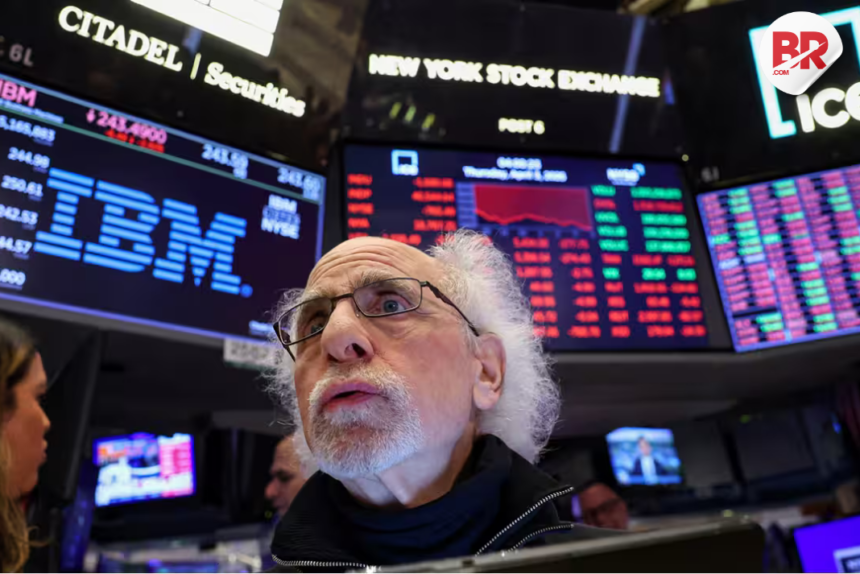
In the latest blow to the tech sector, Nvidia’s stock plunged 5.2% in premarket trading on April 16, 2025, after the company warned that new U.S. export restrictions on AI chips to China could cost it up to $5.5 billion in charges. The move comes as the U.S. government tightens its grip on China’s access to critical technology.
These new restrictions target Nvidia’s H20 AI chips and AMD’s M1308 chips. Nvidia, the leading producer of graphics processing units (GPUs) crucial for artificial intelligence (AI), expressed concern that the restrictions would severely impact its business operations and future growth.

Other Tech Stocks Fall in Response
Nvidia wasn’t the only company to feel the impact. Other tech giants saw their stock prices tumble. AMD, which also manufactures chips affected by the new curbs, dropped 5.9%. Micron, a key player in memory technology, saw a 3.5% decline.
Broadcom, a semiconductor company, was down by 3.1%. The sector as a whole took a hit, and the tech-heavy Nasdaq 100 futures dropped by 1.2%, leading the broader market declines.
The decline in stock prices highlights the growing concern within the tech sector over the ongoing trade tensions between the U.S. and China.
The new export curbs could create significant ripple effects, especially for companies whose business relies heavily on access to the Chinese market.
Also Read: Asia Markets Decline Amid Trade War Fears and Nvidia’s Setback: What’s Next?
The Growing Trade War Fears
The situation has sparked fears of a more intense trade war between the U.S. and China. The CBOE Volatility Index (VIX), often referred to as the “fear gauge” of the stock market, surged to 31.86, signaling heightened investor anxiety.
Investors are closely watching how these tensions unfold, especially given the increasing reliance on Chinese manufacturing in the tech sector.
With the Federal Reserve’s next steps still uncertain, traders are also waiting for any signals from Federal Reserve Chair Jerome Powell.
His upcoming speech, along with data on March retail sales, could offer crucial economic cues for market direction.
Nvidia’s Woes and Future Prospects
For Nvidia, this latest setback adds to an already challenging environment. The company had previously seen strong growth, fueled by the increasing demand for AI chips, which are at the heart of technologies like autonomous driving, machine learning, and high-performance computing.
However, these new export curbs could derail some of its future growth prospects, especially in China, where the company has a significant customer base.
Nvidia’s leadership has warned that the financial toll from the new regulations could be substantial, with the $5.5 billion charge a potential blow to its revenue.
This uncertainty raises questions about Nvidia’s ability to maintain its dominant position in the market, especially as competitors like AMD and Intel (INTC) look to capture more of the AI chip market.
Also Read: Secret Memo Reveals Nvidia’s H20 Chips Are Vanishing in China
What’s Next for the Tech Sector?
As the situation unfolds, tech investors will be watching the broader implications of these export restrictions. While Nvidia faces immediate challenges, the ripple effects could impact the entire tech sector, especially companies with significant exposure to China. The stakes are high, and the consequences of this trade tension could reshape the landscape of global technology for years to come.
While the tech sector is in turmoil today, some companies like United Airlines (UAL) managed to post gains despite recession risks. This highlights the unpredictable nature of the market, where some sectors find ways to thrive even in uncertain times.
Also Read: China Tariffs Skyrocket to 245%—Is This the Breaking Point in the U.S.-China Trade War?












